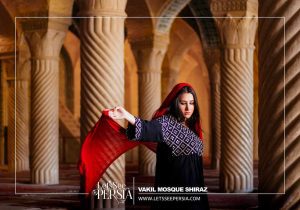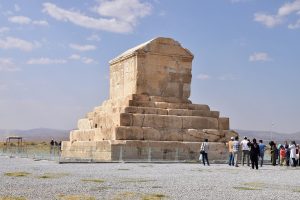Naqsh-e Rostam near Shiraz
The Naqsh-e Rostam is one of the main Shiraz attractions. The ancient historical place. Here, you can find all things to know about Naqsh-e Rostam, like address, photos, tourist information, nearby main attractions, and Iran tours that include this attraction.

Naqsh-e Rostam + address & Photos
- Theme: History and Culture
- Address: Shiraz-Isfahan Road (km. 60)
- Opening Hours: 09:00-18:00
- Recommended Time to Spend: 1 hour
Tourist information of Naqsh-e Rostam
Naqsh-e Rostam is one of Iran’s top attractions. Just north of Persepolis is a set of impressive tombs carved into the rock. These tombs are now called Naqsh-e Rostam. Naqsh-e Rostam is an ancient attraction that is recorded as a UNESCO heritage site.
Most Achaemenid kings, starting with Darius I, were buried here. Most Sassanid reliefs show fights between horses or ceremonies. People thought that the man on the reserves was Rustam (also known as Rostam), the hero of Shahnameh, because the horse fights of the Sasanian kings were like knightly stories.
The great Iranian poet Ferdowsi, who lived in the 10th and 11th centuries, did his best work in the epic of Shahnameh. So, the site is called Naqsh-e Rustam, which means “the carvings of Rustam,” because the people who lived there thought that the man carved on the reliefs was their epic hero, “Rustam.”
- Ka’ba-ye Zartosht : Near the cliffs is a strange tower that looks like it was built in the early sixth century BC. It could have been a temple of fire, or it could have been another tomb. In either case, it was later made more beautiful by an inscription from Shapur I about the times he beat Rome.
- Fire Altars: These kinds of fire altars held a holy fire, which might have been in a metal or clay bowl. From the time of the Achaemenid dynasty to the time of the Sassanids, sacred fires were an essential part of Persian religion. They are usually linked to the faith of Zoroastrianism.
- Triumph of Shapur I: This is the most famous of the Sassanid rock reliefs. It shows how Shapur I beat Valerian and Philip the Arab, two Roman emperors.
- “Grandee“ relief of Bahram II: Two people are on each side of the king, who is holding a giant sword. On the left, you can see five people who may be related to the royal family. The first equestrian relief may be on the tomb of Darius II, which is the fourth one down. It shows the king fighting a mounted Roman enemy.
- Two equestrian reliefs of Bahram II: The first equestrian relief may be on the tomb of Darius II, which is the fourth one down. It shows the king fighting a mounted Roman enemy. In these works of art, the dead body of an enemy can be seen at the feet of the king’s horse.
- Investiture of Narseh: In this relief, the ring of kingship is shown being given to the king by a woman who is usually thought to be the goddess Aredvi Sura Anahita. But the king or queen isn’t shown in a way that would be expected of a god or goddess, so the woman likely is a relative, maybe Queen Shapurdokhtak.
- Equestrian relief of Hormizd II: This relief is found under tomb 3, which may belong to Artaxerxes I. It shows Hormizd driving an opponent (likely Papak of Armenia) off his horse. Over the tomb and to the right of it is a badly damaged relief of a man with courtiers who may be Shapur II.

You can add this attraction to your itinerary. Please get in touch with tour operators.
- info@letsseepersia.com
- Nearby Location
Naqsh-e Rostam to Persepolis. 18 min by car.
Naqsh-e Rostam to Pasargadae. 1 hr 1 min by car.
Naqsh-e Rostam to Quran Gate. 52 min by car.
Naqsh-e Rostam to Tomb of Hafez. 55 min by car.
Naqsh-e Rostam to Vakil Mosque. 1 hr 9 min by car.
Naqsh-e Rostam to Shiraz International Airport. 1 hr 16 min by car.









